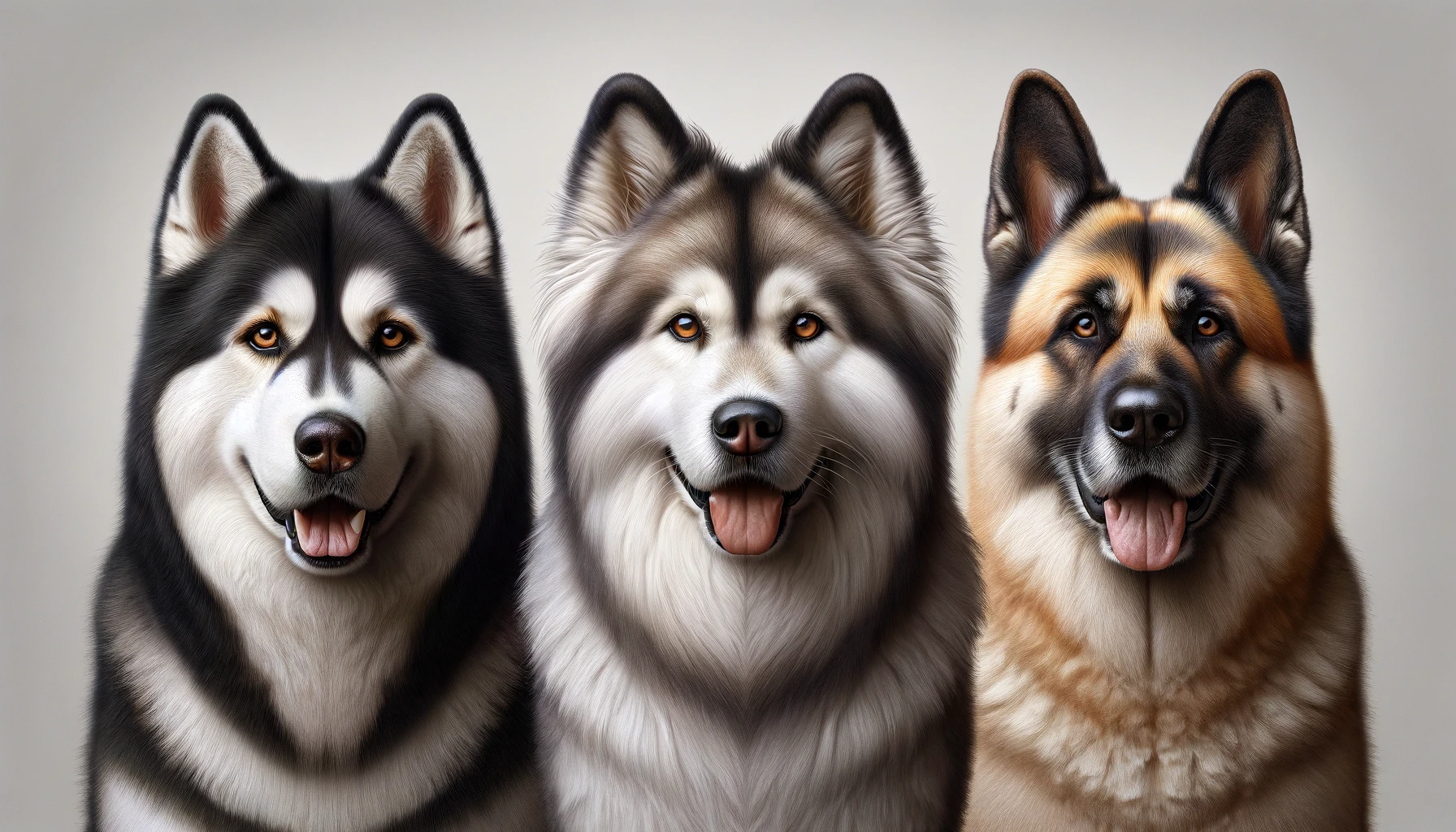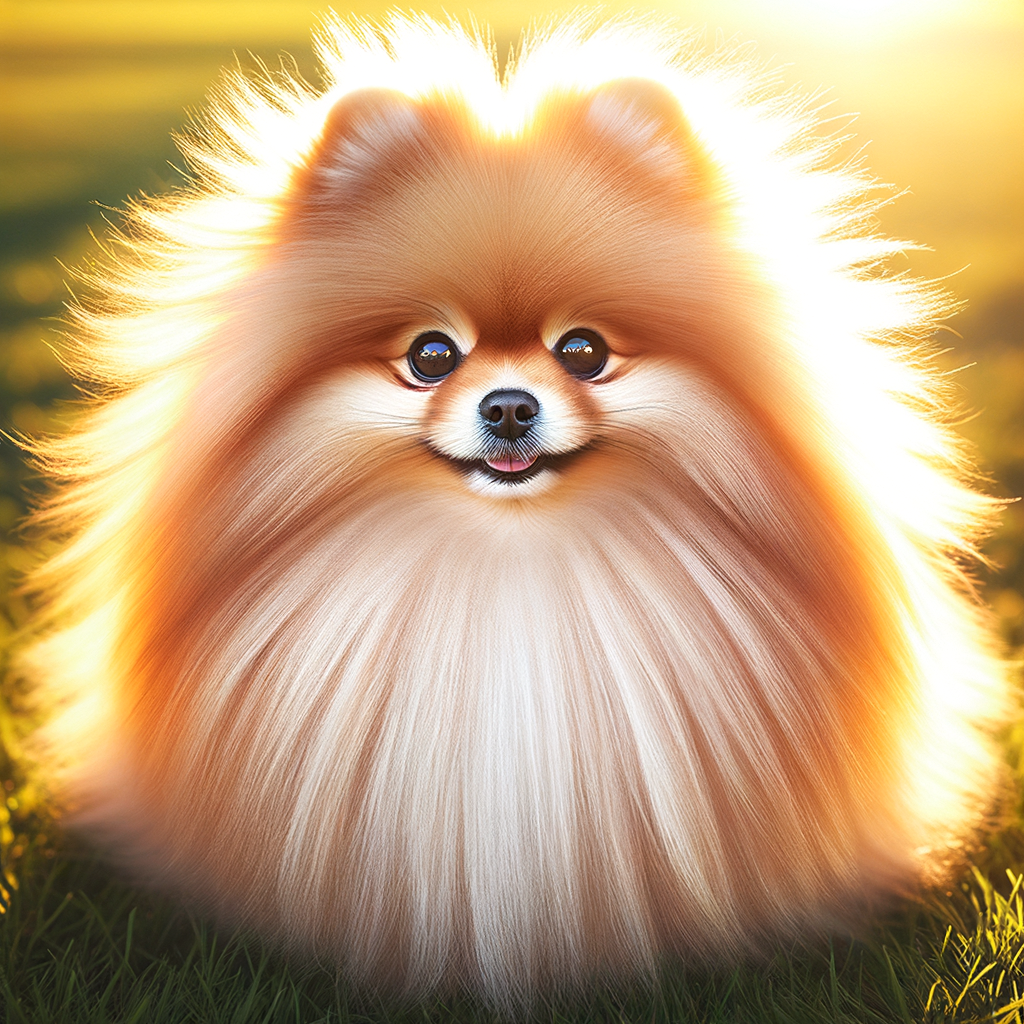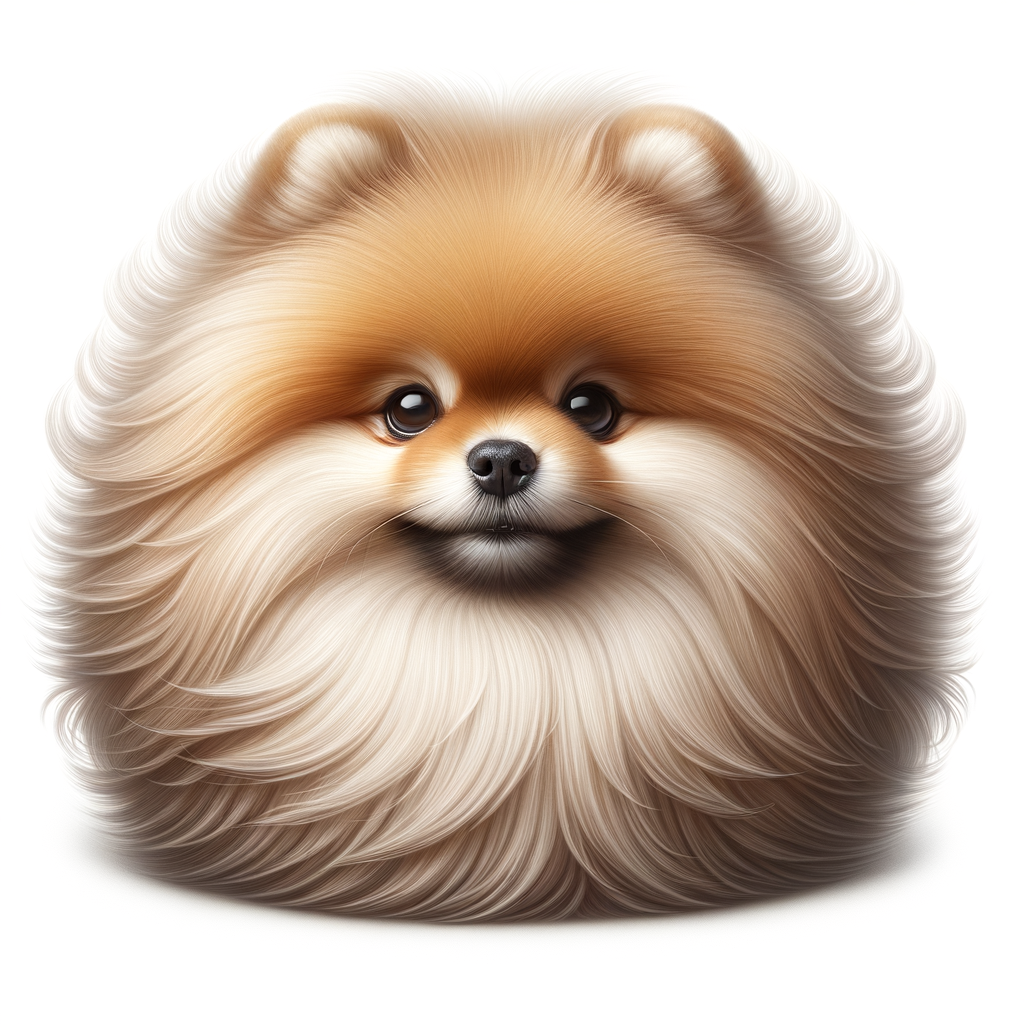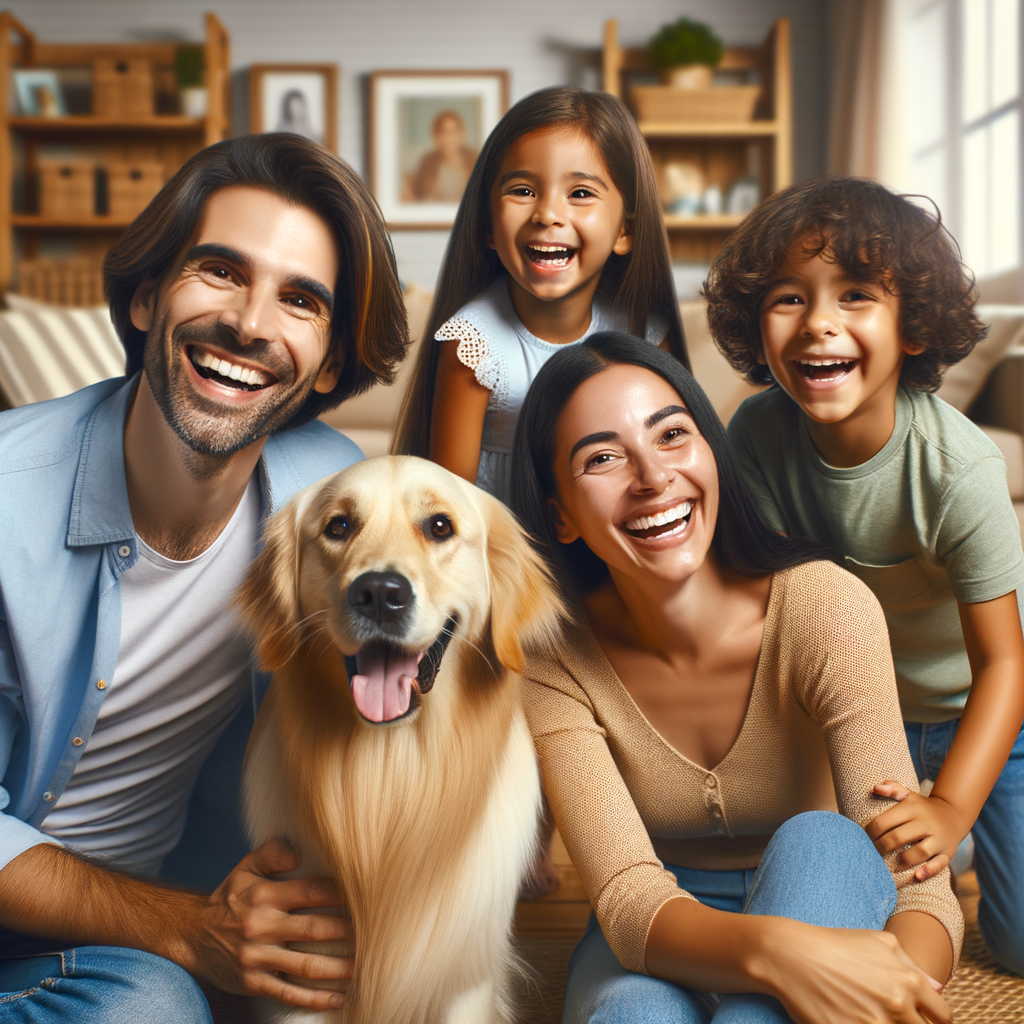Understanding the Importance of Your Dog’s Natural Coat
As a holistic veterinarian, I’ve had countless conversations with concerned dog parents about grooming. One of the common misconceptions I encounter is the idea that shaving a dog’s fur makes them cooler and more comfortable, particularly in the summer months. However, this is not always the case. In fact, I cannot stress enough the importance of understanding the intricacies of different dog breeds and their coat types. Not all canines are created equal, and shaving their fur can sometimes do more harm than good.

The Function of Your Dog’s Fur
Each strand of your dog’s coat serves a specific purpose, whether it’s regulating temperature, protecting the skin from the sun, or providing insulation against the cold. The science behind your canine companion’s fur is fascinating. Some breeds have double coats, featuring a dense undercoat beneath a more protective top coat. This design helps them adapt to different climates. Other breeds have single coats, but these still require their natural coats for protection against the elements.
Dog Breeds That Should Not Be Shaved
So, what dog breeds should not be shaved? Double-coated breeds like Huskies, Golden Retrievers, and Shetland Sheepdogs are prime examples. Shaving these breeds can disrupt their natural insulation processes and potentially cause skin problems. Some single-coated breeds, such as Weimaraners and Boxers, also fare better without shaving as their thin coats offer sun protection without overheating them.
Risks Associated with Shaving Your Dog
Shaving can lead to a series of complications like potential skin problems, allergies, or disruption of their natural growth patterns and temperature regulation. This could result in discomfort or health issues for your beloved pet. That’s why knowing what dog breeds should not be shaved is an essential part of responsible pet ownership.
Instead of shaving, consider alternatives like regular brushing and mat removal to maintain a healthy coat. Adapting your grooming routines to seasonal changes can also help manage shedding and keep your dog comfortable.
Nutritional support, proper bathing, and drying techniques can also go a long way in preserving your dog’s coat integrity. However, there are certain medical and emergency exceptions when shaving might be necessary. As always, it’s best to consult with your veterinarian before making any significant changes to your pet’s grooming routine.

The Science Behind Dog Fur and Skin
Have you ever wondered about the fascinating science that resides just beneath your furry friend’s coat? By understanding the intricacies of your dog’s skin and fur, you can ensure their optimal health and well-being.
How Dog Coats Regulate Temperature and Protection
Every dog breed’s coat is a unique combination of hair shafts, follicles, and skin designed to provide them with protection and temperature regulation. Dogs cool down mainly through panting and only a small amount through their skin. Their fur acts as a thermal insulator, helping them maintain body temperature, both in the cold winter months and hot summer days. This is why removing their fur, especially for certain breeds, can disrupt this natural process and cause them to overheat or be more vulnerable to cold.
The Role of Double Coats and Single Coats
Double-coated breeds have two layers of fur. The top layer or “guard hairs” protect them from rain or snow and the undercoat, which is thick and fluffy, provides insulation. Breeds like Huskies, Golden Retrievers, and Shetland Sheepdogs have double coats. Shaving these breeds can lead to permanent damage to their fur and skin health.
On the other hand, single-coated breeds only have a top layer of hair, which grows continuously, much like human hair. Poodles and Maltese dogs are examples of single-coated breeds. Although these dogs can be carefully clipped or trimmed for aesthetic purposes, shaving them entirely can still lead to skin damage and sunburn.
Simply put, a dog’s coat isn’t just fur deep. It’s a complex system designed to protect your dog from the elements and regulate their body temperature. Whether your dog has a double or single coat, it’s crucial to understand how their fur functions and why it plays a vital role in their overall health. So, the next time you’re tempted to give your furry friend a summer shave, remember that you might be doing more harm than good. Instead, consider alternative grooming techniques that can help maintain your dog’s coat without compromising their health.
Remember: what dog breeds should not be shaved is not a question of aesthetics, but of health and well-being. So, let’s keep our furry friends’ coats intact, and embrace the science of their skin and fur!
List of Dog Breeds That Should Not Be Shaved
When it comes to grooming our furry friends, it’s crucial to know which dog breeds should not be shaved. Shaving can cause serious harm to certain breeds by disrupting their natural coat’s function and potentially leading to skin problems. Let’s dive into the specifics of which breeds fall into this category.
Double-Coated Breeds: The Insulation Experts
Double-coated breeds have two layers of fur: a denser undercoat and a longer, protective outer coat. This double layer works in harmony to regulate body temperature, keep the skin protected, and wick away water. When we shave these coats, we disrupt this delicate system, potentially leading to overheating, skin damage, and coat growth issues.
Here are some double-coated breeds that should not be shaved:
- Australian Shepherd: Known for their thick, wavy coats, Australian Shepherds rely heavily on their fur for insulation.
- Alaskan Malamute: These dogs are built for freezing climates, and their double coats are crucial for their ability to withstand cold temperatures.
- Siberian Husky: Much like the Alaskan Malamute, the Siberian Husky has a dense coat that protects against harsh weather.
- Golden Retriever: Despite having a long outer coat, Golden Retrievers also possess a thick undercoat that helps keep them comfortable in various weather conditions.
- Shetland Sheepdog: Shelties have a thick double coat that shouldn’t be shaved due to its vital role in temperature regulation.
Single-Coated Breeds That Still Require Their Natural Coats
Even though they only have one layer of fur, certain single-coated breeds should also not be shaved. Their coats might not provide the same insulation as double-coated breeds, but they still play a significant role in protection from sun damage and temperature regulation.
Here are a few single-coated breeds that should keep their natural coats intact:
- Boxer: Boxers have a short, thin coat that provides protection from the sun and should not be shaved.
- Weimaraner: Known for their sleek, silver coats, Weimaraners rely on their fur to guard against sunburn.
- Staffordshire Bull Terrier: Staffies have a short, dense coat that protects their skin and helps regulate body temperature.
- Greyhound: Greyhounds have a very thin coat that provides vital protection from the sun, and shaving can leave their skin vulnerable to damage.
Remember, the key to a healthy dog coat is regular grooming, not shaving. Brushing will help remove dead hair and keep the coat healthy. The rule of thumb is: if you’re unsure whether you should shave your dog, consult with a professional groomer or a veterinarian. They can provide breed-specific advice and help you maintain your dog’s coat in the best way possible.
Potential Skin Problems and Allergies
Shaving your dog’s coat can potentially lead to an array of skin issues and allergies. Dog’s fur acts as a protective barrier for their skin, safeguarding it against the elements, harmful UV rays, and even parasites. When you shave your dog’s coat, you strip away that natural protection, leaving their skin vulnerable.
For instance, your dog’s skin may become dry and itchy after shaving. This can lead to constant scratching, which can cause sores and hot spots. In some cases, it might even lead to infection if not promptly treated.
Moreover, some dogs are prone to skin allergies. Without their fur, these allergens are more likely to come in direct contact with the skin, triggering allergic reactions that cause discomfort and irritation.
Disruption of Natural Growth Patterns and Temperature Regulation
A dog’s coat serves a function beyond just making them look adorable. It’s designed by nature to keep them warm in winter and cool in summer. When you shave a dog’s fur, it can disrupt their natural temperature regulation process.
Double-coated breeds especially rely on their coats for insulation. The undercoat provides warmth during winter, and in summer, it sheds to allow the outer coat to protect the dog from the sun and insulate against the heat.
When you shave a double-coated dog, you’re removing this natural insulation system. This can cause them to overheat in summer and be too cold in winter. It can also disrupt the natural growth patterns of the coat.
In some cases, the undercoat may grow back faster than the outer coat, leading to a patchy appearance. Or the hair might not grow back the same as before, changing the texture and color of the coat. In worst-case scenarios, some parts of the coat might not grow back at all, a condition known as post-clipping alopecia.
Understanding the Risks Helps Protect Your Pup
Understanding these risks doesn’t mean you should never groom your dog. It simply means finding safer alternatives to shaving, especially for those breeds that should not be shaved.
These, for instance, could be regular brushing to remove loose hairs and prevent matting, or using professional grooming techniques that maintain the coat’s integrity.
Every dog deserves to have a healthy, comfortable coat. By knowing the risks associated with shaving, you can make informed decisions about your pup’s grooming needs, ensuring that they’re always looking – and feeling – their best.
Remember, when it comes to your pup’s coat, sometimes less is more. Just because our hair feels better after a haircut doesn’t mean our furry friends feel the same way. So, think twice before you pick up those clippers. Your pup’s coat is more than just fur – it’s their natural armor against the world.

Grooming Alternatives to Shaving
While it’s important to keep your dog’s coat clean and free of mats, shaving is not always the best solution, especially for certain breeds. So, what are some grooming alternatives that can help maintain your dog’s natural coat while ensuring their comfort and health? Let’s explore.
Best Practices for Brushing and Mat Removal
Regular brushing is one of the most effective ways to manage your dog’s coat. It helps remove loose hair, reduces the chance of matting, and stimulates the skin to promote healthy fur growth. Here are some tips for effective brushing:
- Choose the right brush: Different breeds have different coat types, and not all brushes are suitable for all dogs. For example, a slicker brush is often best for dogs with long, silky coats, while a rake is more suitable for dogs with thick, dense fur.
- Brush regularly: Depending on your dog’s breed, you may need to brush them daily or several times a week. Regular brushing helps prevent matting and keeps the coat healthy.
- Be gentle: Brushing should be a pleasant experience for your dog. Always be gentle and take care not to pull on the skin or fur.
When it comes to mat removal, it’s important to address mats as soon as you notice them. If left untreated, mats can pull on the skin causing discomfort or even lead to skin infections. Here’s how to handle them:
- Use a mat splitter or mat rake: These tools are designed to safely cut through mats without hurting your dog.
- Never cut mats with scissors: It’s easy to accidentally cut your dog’s skin, especially if the mat is close to the skin.
- Consider professional help: If the mat is too large or too close to the skin, it’s best to seek help from a professional groomer.
Professional Grooming Tips for Maintaining a Healthy Coat
Professional groomers have the skills and tools to properly care for your dog’s coat. Here are some professional grooming tips to maintain a healthy coat:
- Regular grooming appointments: Depending on the breed, your dog may benefit from professional grooming every 4-6 weeks.
- Thinning rather than shaving: For dogs with thick, double coats, professional groomers often use thinning shears to remove excess hair without altering the coat’s natural insulating properties.
- Proper bathing techniques: Professional groomers know how to properly wash and dry different coat types to avoid causing skin irritations or damaging the coat.
Remember, every dog is unique, and what works for one might not work for another. Always consider your dog’s individual needs and consult with a professional if you’re unsure about the best grooming practices for your furry friend.
Understanding Seasonal Shedding and Coat Changes
When it comes to your dog’s coat, it’s critical to understand the effects of seasonal changes. The weather has a significant impact on the condition and needs of your pet’s fur. So, let’s delve a little deeper into how these changes can affect your pup’s coat.
How Seasons Affect Your Dog’s Coat
Dogs’ coats are biologically designed to protect them from environmental factors. During winter, their bodies generate a thicker undercoat to provide extra insulation against the cold. This undercoat is then shed during warmer months, reducing the coat’s thickness to help the dog stay cool. This cycle is particularly noticeable in double-coated breeds like Huskies or Golden Retrievers, which are among the “what dog breeds should not be shaved” category.
While it might seem like a good idea to shave your dog’s fur in summer to help them stay cool, this can actually do more harm than good. The layers of fur not only insulate against the cold but also protect against sunburn and overheating in the summer.
Adapting Grooming Routines to Seasonal Changes
Understanding your dog’s seasonal shedding patterns is key to maintaining their coat health. Here are some tips to adapt your grooming routine to these changes:
- Regular Brushing: Increased shedding during the transition between seasons can lead to mats and tangles. Regular brushing removes loose fur and prevents matting. It also helps distribute natural oils, keeping the coat healthy and shiny.
- Appropriate Bathing: Bathing too frequently can strip the coat of its natural oils, leading to dry, itchy skin. In winter months, consider using a moisturizing shampoo to combat dryness caused by indoor heating.
- Healthy Diet: A balanced diet rich in Omega-3 and Omega-6 fatty acids can help maintain a healthy coat year-round. These nutrients support skin health, reduce inflammation, and help your dog’s coat stay shiny and strong.
Remember, each breed has specific needs and sensitivities, so it’s important to research and understand what’s best for your pup before making any major changes to their grooming routine. When in doubt, consult a professional groomer or your trusted vet.
In essence, understanding seasonal variations in your dog’s coat and adjusting grooming routines accordingly is key to maintaining coat health. This knowledge is particularly vital for those breeds that should not be shaved. A well-cared-for coat not only keeps your dog looking their best but also supports their overall health and well-being.

How to Care for Your Dog’s Coat Without Shaving
Nutritional Support for a Healthy Coat
Providing your dog with a well-balanced diet is a critical step in maintaining a healthy coat. Remember, the health of your dog’s fur is a reflection of their overall health. Foods rich in omega-3 and omega-6 fatty acids, such as fish oil, flaxseed, and certain types of meat, can enhance the shine and texture of your dog’s coat. Vitamins A, E, and Biotin also play a vital role. You might consider asking your vet about the addition of dietary supplements if needed.
- Omega-3 and Omega-6 fatty acids – for a shiny coat
- Vitamin A – for a healthy skin and coat
- Vitamin E – helps to protect the skin and fur
- Biotin – supports skin, coat, and nail health
Bathing and Drying Techniques to Preserve Coat Integrity
It’s important to understand that the frequency of bathing depends on your dog’s breed, lifestyle, and health condition. While some breeds may require weekly baths, others are fine with a monthly cleanse. Over-bathing can lead to dry skin and a brittle coat, while under-bathing could lead to matting and odors.
Choosing the right products is crucial. Always use a dog-formulated shampoo as human products can disrupt the natural pH balance of their skin. Conditioners can also help in keeping their coat soft and tangle-free.
When it comes to drying, avoid using high-heat blow dryers as they can damage the fur and cause skin irritation. Instead, use a pet-safe blow dryer or let their coat air dry. Towel drying is a good option for dogs with short hair. For longer-haired breeds, brushing during drying can prevent tangles and matting.
- Avoid over-bathing or under-bathing – establish a suitable bath routine based on your dog’s needs
- Use dog-formulated shampoos and conditioners – to maintain the natural pH balance of their skin
- Avoid high-heat blow dryers – use pet-safe blow dryers, air dry, or towel drying
Remember, each dog is unique and what works for one may not work for another. Understanding your dog’s specific breed, coat type, and personal needs are key to providing the best coat care. Never hesitate to reach out to a professional groomer or a vet for advice. These tips will help ensure your beloved pet’s coat stays healthy and vibrant without the need for shaving.
When Is Shaving Necessary? Medical and Emergency Exceptions
The vast majority of dog breeds should not be shaved. However, there are certain circumstances where it might be necessary.
Situations That Warrant Shaving: A Veterinarian’s Perspective
First, let me clarify that these are exceptions, and not the norm. You must always consult with a veterinarian or a professional groomer before deciding to shave your dog.
One instance where shaving might be warranted is when there are mats in your dog’s coat that cannot be removed by brushing or combing. Matting can cause severe discomfort and even lead to certain health issues like skin infections. In such cases, a vet might recommend shaving as the most humane option.
Another occasion could be due to a medical condition such as skin allergies or parasites. In these cases, a vet might need to shave the fur to provide treatment. Keep in mind, this is usually a temporary measure, and the goal is to allow the fur to grow back healthily once the condition is treated.
Post-Surgical Care and Shaving: What to Expect
If your furry friend has to undergo surgery, they’ll likely need to be shaved. This is done to prevent any fur from interfering with the surgical site or getting caught in sutures.
After surgery, it’s important to make sure their skin stays clean and is not irritated by anything, including their own fur. You’ll need to keep an eye on the shaved area and watch for signs of infection or irritation.
Once the surgical site has healed, their fur will slowly start to grow back. Remember, it’s important to keep the area clean and avoid exposing it to extreme weather conditions until the fur has fully returned.
I understand your worries about shaving your dog’s coat. It’s an issue that every responsible dog parent should be concerned about. However, remember that the goal is always your pup’s health and comfort. While it’s crucial to preserve their natural coat as much as possible, there may be times when shaving is the best option for their well-being.
Protecting Your Pup’s Natural Coat: Final Thoughts
Caring for your dog’s coat goes beyond simple grooming. It’s about understanding the unique needs of their breed and coat type and learning how to meet them. In some cases, this means resisting the urge to shave them, even in the heat of summer. In other cases, it could mean making the difficult decision to shave them for medical reasons.
No matter what, remember to always consult with a professional. Whether it’s a groomer or a vet, they’ll be able to guide you towards the best decision for your furry friend. After all, every dog deserves a healthy, comfortable coat, and it’s our job as their caregivers to make sure they have it.
Remember, the love we have for our dogs often means making tough decisions in their best interests. And sometimes, protecting your pup’s natural coat means knowing when it’s necessary to shave it and when it’s not.
Frequently Asked Questions
Q1: Why should certain dog breeds not be shaved?
A: Certain dog breeds have a double coat that acts as insulation in both hot and cold weather. Shaving this coat can interfere with their natural ability to regulate their body temperature and can lead to health problems.
Q2: Which dog breeds should not be shaved?
A: Breeds with double coats such as Huskies, Golden Retrievers, and Shelties should not be shaved. It’s always best to consult with a professional groomer or your vet to know what’s best for your specific breed.
Q3: What can happen if I shave my double-coated dog?
A: Shaving a double-coated dog can lead to sunburn, skin irritations, and can permanently damage their coat. It can also lead to overheating as their coat helps them regulate their body temperature.
Q4: How can I keep my double-coated dog cool in the summer?
A: Regular brushing can help remove dead hair and improve air circulation. Providing plenty of shade and fresh water, and avoiding walks during the hottest part of the day can also help keep your dog cool.
Q5: Can a dog’s coat grow back normally after being shaved?
A: In some cases, a dog’s coat may not grow back the same after being shaved. It can grow back patchy, uneven, or not at all. This is another reason why it’s important to avoid shaving certain breeds.
Dr. Candy, a holistic veterinarian and certified raw dog food nutrition specialist, graduated from Oklahoma State University in 2009 with a DVM and has since specialized in companion animal nutrition, advocating for species-specific diets. With a background in wildlife rehabilitation and oil spill response, she combines holistic health and conventional medicine in her unique approach to treating chronic diseases, allergies, and autoimmune conditions in pets. As the owner of a veterinary practice in Colorado and an author, Dr. Candy is dedicated to educating pet parents and improving the health and happiness of animals.




